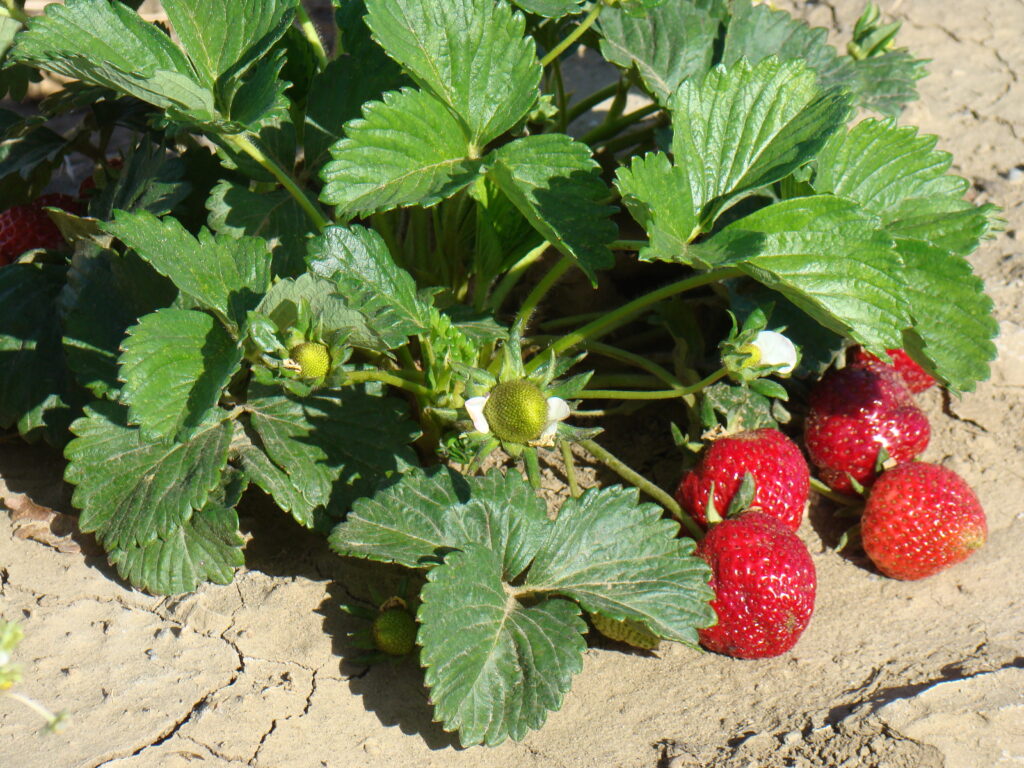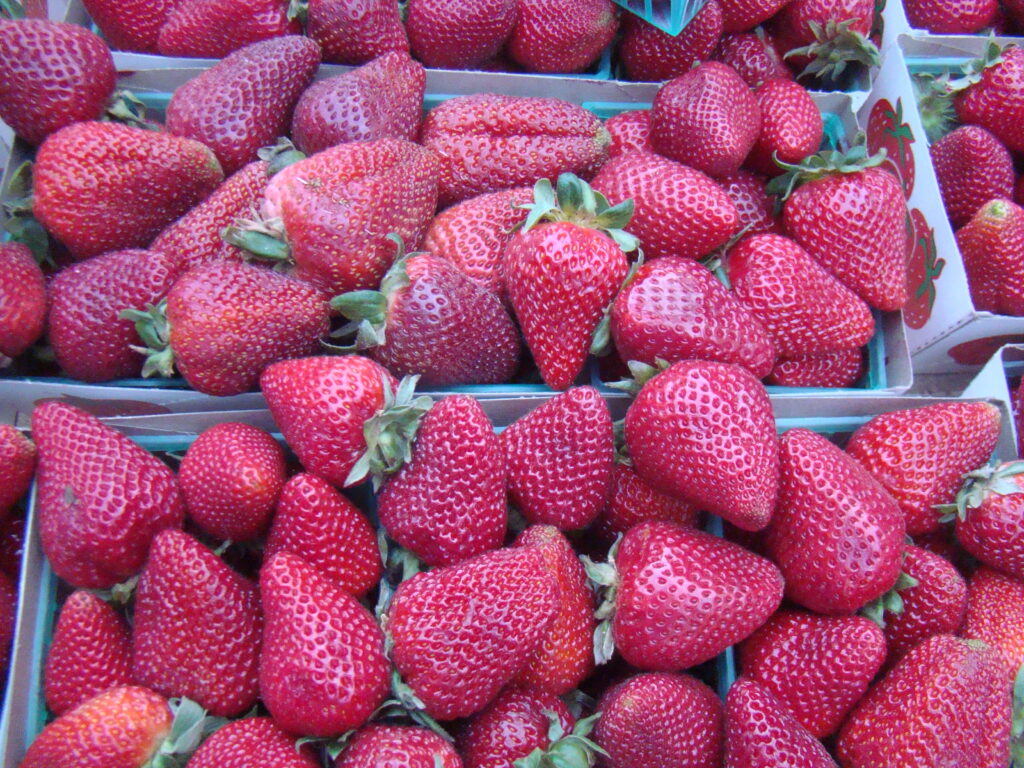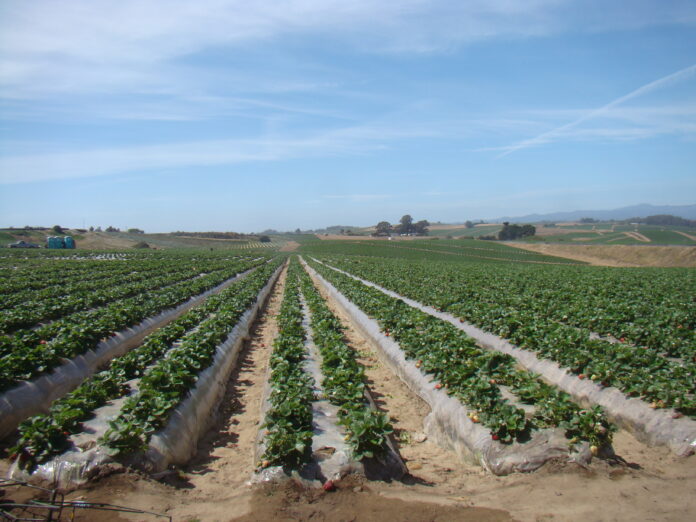by Jackie Bantle
Saskatchewan Perennial Society
Wild strawberries have been eaten by people around the world since ancient times. The modern strawberry that is popular today, Fragaria ananassa, originated from crosses of two New World species of strawberries, Fragaria chiloensis (originating in Chile) and Fragaria virginiana (originating in North America).
For Prairie gardens, three main types of strawberries are recommended: June-bearing, ever-bearing and day-neutral. Overwintering June-bearing strawberries produce flowers in spring and fruit is ready to be picked in late June and early July (about a 3 week fruiting time). The runners that the plants send out in fall will produce and fruit for the following summer. Common June-bearing strawberry cultivars include; ‘Kent’, ‘Bounty’, ‘Honeoye’ and ‘Cavendish’.
Ever-bearing strawberries start fruiting in late June – early July and continue to fruit until fall. Typically, ever-bearing strawberries have better winter hardiness than other strawberry types but the fruit is smaller. If planted in spring, ever-bearing strawberries may produce fruit in late summer or fall of that same year. ‘Ogallala’ and ‘Fort Laramie’ are common ever-bearing strawberry cultivars.
On the Prairies, day-neutral strawberries are planted in spring and treated as an annual. The first crop of day-neutral strawberries ripens in early July with the heaviest production occurring in late August and September until a killing frost. Even with winter protection, day neutral strawberries do not overwinter well. One big advantage of growing day neutral strawberries is that they will produce fruit in the same year that they are planted. Additionally, day neutral strawberries also produce fruit on runners that have not rooted. Day-neutral strawberry cultivars recommended for northern locations include: ‘Seascape’, ‘Tristar’, ‘Fern’, ‘Albion’.
Select a sunny, sheltered location for your strawberry patch. Although strawberries are self fertile (they contain both male and female parts in the same flower), research has demonstrated that larger fruit will form if the flowers have the help of insects for pollination. A sheltered location helps bees and other pollinators do their work. Strawberry plants can withstand a slight frost.

Seascape strawberry 
California strawberry group
Strawberries are planted as rooted transplants or bareroot. ‘Bare-root’ strawberries refer to plants that have no soil around their roots. After purchasing, keep bare root strawberry plants cool and moist until you are able to plant them out; a plastic bag in the fridge works well for several days. During transplanting, keep the exposed roots out of the sun and wind: carry the plants in a pail of water, if necessary. Strawberries are very sensitive to planting depth: keep the midpoint of the strawberry crown level with the soil surface. If the crown is covered by soil, the plant will either rot or fail to send out runners. If the strawberry plant is planted too shallow, the crown and roots will dry out. Gently firm the soil around all strawberry plants for good soil to root contact. Water in all transplants with 10-52-10 fertilizer. Mix according to label directions. For best results, keep strawberry plants well-watered throughout the growing season but especially for several weeks after transplanting. Spacing for strawberries is 20-30cm on center.
If grey mold is a problem on fruit or plants, avoid watering strawberries in the evening and place straw mulch or post peelings around the strawberry plants to prevent soil born diseases from splashing onto the fruit or plants.
A common insect problem in strawberries is the tarnished plant bug (Lygus lineolaris). Tarnished plant bug damage is characterized by deformed berries that are often described as “cat-facing” or “button berry”. The damage occurs when the bug eats parts of the flower during flower development. Tarnished plant bugs are about 0.5cm long oval shaped bug, bronzy in color with a distinctive white triangle or v-shape behind their head. To prevent tarnished plant bug infestations, control weeds in and around the strawberry patch and keep lawn and garden edges mowed. Remove leaf litter in fall to reduce the number of overwintering sites. If your patch is small enough, physically remove the tarnished plant bug by tapping the flowers and dislodging the insects into a pan of soapy water. If the infestation cannot be brought under control, you may need to destroy your current strawberry patch and start a new patch in a different area of your yard.
Strawberries can be easily be grown in containers as long as ample water and nutrients are available throughout the growing season. Use day neutral strawberry cultivars for containers as plants will not overwinter in above ground containers.
This column is provided courtesy of the Saskatchewan Perennial Society (SPS; saskperennial@hotmail.com ). Check our website saskperennial.ca) or Facebook page (facebook.com/saskperennial). All Saskatchewan Perennial Society events are on hold until further notice.


